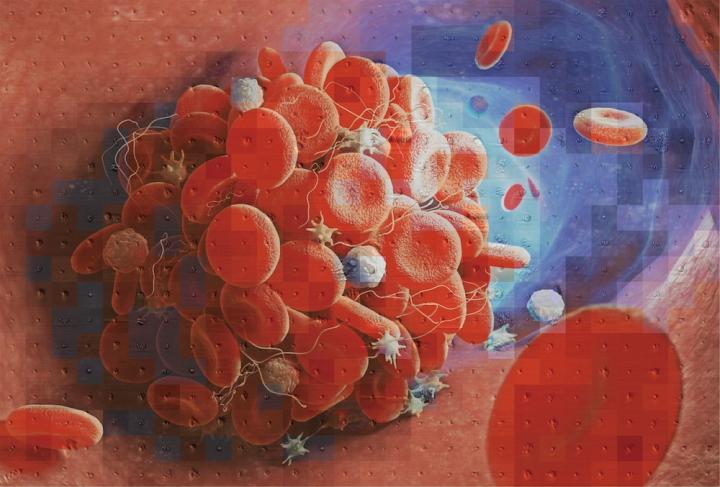Article
AI May Help Physicians Diagnose Blood Clots
Computer learning algorithms can now learn to distinguish different types of blood clots based on what caused them, says a new study.
Mosaic of a blood clot created using the numerous platelet images acquired via the iPAC method. PHOTO CREDIT: Yuqi Zhou (CC BY 4.0)

Computer learning algorithms can now learn to distinguish different types of blood clots based on what caused them, says a new study.
The tool, which they named the intelligent platelet aggregate classifier (iPAC), could ultimately be used to help physicians diagnose what caused a blood clot and help them select the appropriate treatment say its developers. For example, it could help them determine if aspirin or another kind of anti-clotting drug would be the best choice for a person who has just had a heart attack or stroke.
"Different types of blood clots are caused by different molecules, but they all look very similar," explains lead author Yuqi Zhou, a PhD student at the Department of Chemistry, University of Tokyo, Japan. "What's more, they are nearly impossible to tell apart using existing tools such as microscopes."
Using high-throughput imaging flow cytometry, Zhou and her colleagues captured thousands of images of different types of clots they created using blood samples from a healthy individuals which had been exposed them to various clotting agents.
They first used a type of machine-learning technology called a convolutional neural network to train a computer to identify subtle differences in the shape of different types of clots caused by different molecules. They tested this tool on 25,000 clot images that the computer had never seen before and found it was also able to distinguish most of the clot types in the images.
Then they tested whether this new tool could diagnose different clot types. They took blood samples from four healthy people, exposed them to different clotting agents, and showed that iPAC could tell the different types of clots apart.
"We showed that iPAC is a powerful tool for studying the underlying mechanism of clot formation," Zhou says. She adds that, given recent reports that COVID-19 causes blood clots, the technology could one day be used to better understand the mechanism behind these clots too.
Although still in its early development, the researchers believe it could eventually be very useful in advancing medical diagnosis and treatment of blood clots.
"Using this new tool may uncover the characteristics of different types of clots that were previously unrecognized by humans and enable the diagnosis of clots caused by combinations of clotting agents," says senior author Keisuke Goda, Professor at the Department of Chemistry, University of Tokyo. "Information about the causes of clots could one day help researchers and medical doctors evaluate the effectiveness of anti-clotting drugs and choose the right treatment, or combination of treatments, for a particular patient."




